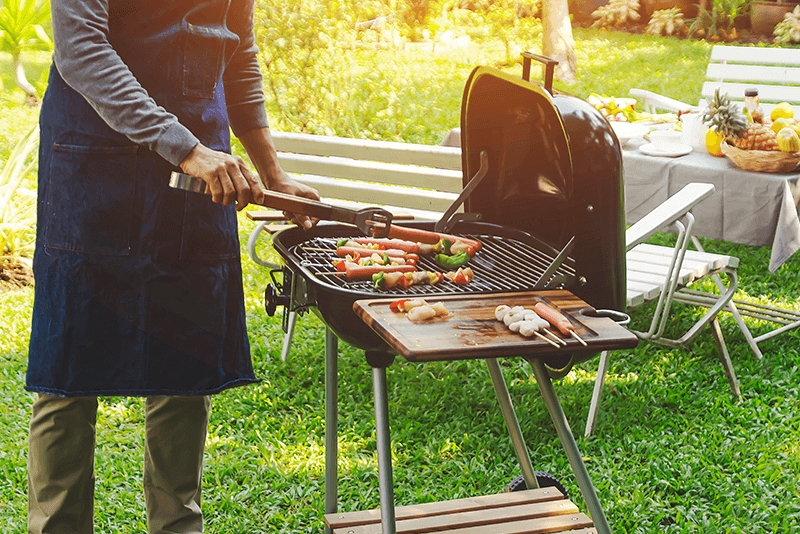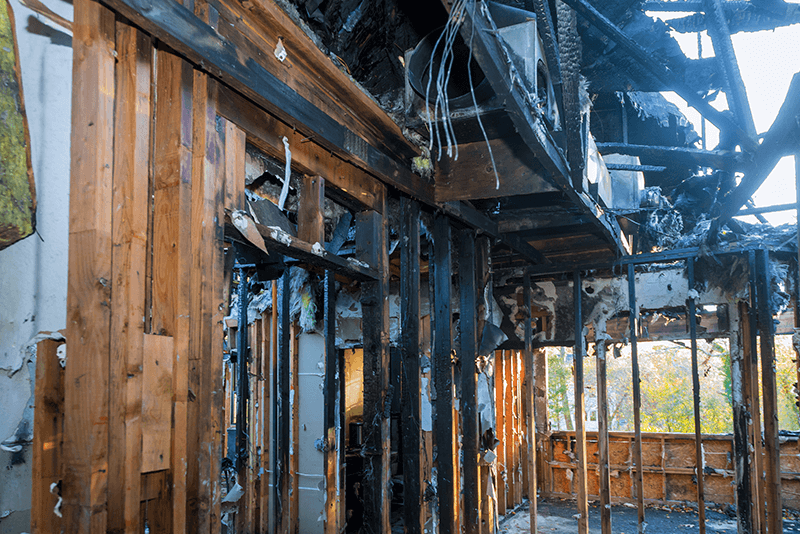Originally posted 25 January 2024, updated 18 December 2024
There are more causes of fire in the home than you would think. Most of us go about our daily lives without ever thinking about fire safety. We know that we need to be careful with candles, and not leave lighters within reach of children, but we don’t know many of the other causes of fire that lurk in our homes.
We know this because we’ve all been there. It’s nothing to be ashamed of. We all need to learn at some point!
But, that’s the important thing, we need to learn.
The onus is on us to protect ourselves and our families – with a little help from people like us!
We’re here to help raise awareness, share facts, and offer lifesaving products that make you feel safer.
So, without further ado…
Common Causes of Fire in the Home
1. Cooking and Cooking Equipment
Your cooking processes and cooking equipment can be one of the key causes of fire in the home.
In fact, 49% of fires in the home are due to cooking.
Habits such as leaving cooking unattended, cooking at very high temperatures, and leaving materials such as tea towels near the hob can quickly lead to a disaster.
Similarly cooking equipment malfunctioning or not being used properly can cause a fire in your home.
Ensuring that your cooking equipment is cleaned regularly and used as per the manufacturer’s instructions are key ways to stay safe.
You can learn more on our blog here.
2. Mirrors and glass
Something not many of us consider is where we’re placing mirrors and glass.
If placed in direct sunlight, say on a windowsill or a worktop near the window, the mirror or glass can reflect and focus light onto a flammable surface.
This can cause flammable material such as tea towels, curtains, or sofa fabric to ignite.
It is important to keep mirrors and glass away from direct sunlight and windows.
3. Human error
Many of the items on this list can be traced back to human error somewhere.
Unfortunately, we are essentially flawed beings and it’s easy for us to become complacent and have accidents.
These things happen and it’s not something to beat yourself up about.
But, we need to take care of what we do and keep fire safety at the back of our minds.
Things like:
- Remembering to blow candles out
- Never leaving cooking unattended
- Being careful around open flames, fires, and heating equipment
- Learning about lithium-ion battery products; and
- Knowing how to properly handle flammable substances
can all keep you safe, even when you are feeling overwhelmed or forgetful. Making fire safety a habit rather than an afterthought will help too.
4. Clutter
Clutter can be an unexpected danger in the home as it obstructs escape routes, provides fuel for a fire, and can make tackling the fire even more difficult than usual.
This also applies to untidiness and storing bikes, or similar large items, in hallways, doorways, landings or garages.
The key to staying safe is to regularly declutter your space – clearing fire exit routes and minimising hazards in hallways, and of course, equipping yourself with adequate fire protection in your garage, workshop, shed or home to tackle any fires that may occur.
5. BBQs, fires, and candles
Any naked flame in and around the house is going to be a fire hazard.
These are most commonly seen in BBQs, wood burners, fire pits, and candles.
Accidental knocks, forgotten flames, and proximity to flammable materials can create a serious and unwanted situation.
You need to be on high alert whenever there are flames in or outside your home, and knowing the risks and how to manage them can prevent disaster.
To learn more about BBQ safety, you can read our blog here.
6. Batteries, electrical devices, and counterfeit goods
We’ve been raising a lot of awareness about the dangers of lithium-ion batteries and the mishandling of them, and you
And for good reason.
Batteries, and the electrical devices that use them, present a real fire risk if they’re not used properly.
They can overheat, burst into flames, and release toxic gases if damaged.
Counterfeit electricals and chargers increase the risk of this happening as they do not have the stringent safety measures that genuine ones do.
You can read more about the dangers of lithium-ion batteries on our blog.
7. Electrical wiring
Electrical fires can have a number of causes and are difficult to fight.
Faulty wiring, overloaded sockets and circuits, broken appliances, and faulty connectors can all cause electrical fires.
These fires are often unexpected as the wiring runs inside the fabric of your building.
To avoid them, you should always use a certified tradesperson for any improvements or repairs.
You should also take note of advice from sources such as Electrical Safety First, and the manufacturers of your electrical goods.
8. Aerosol cans
Aerosol cans such as deodorant, air freshener, and dry shampoo, are really useful. They provide solutions in a convenient, small can.
However, if exposed to heat or punctured, they can cause big problems.
Cans may explode or ignite fires when not used or disposed of properly.
Most councils collect aerosols via household collections, but you should check this for your area. If they don’t, you can take them to a local recycling facility.
9. Tumble dryers
Clogged lint filters and vents can turn tumble dryers into a fire hazard.
The heat that is used to dry the clothes can spark the lint and lead to fires.
You need to ensure that you are regularly cleaning the lint filters and allowing proper ventilation.
You should also consider professional dryer maintenance to check the health of your appliance.
10. Plants and decorations
Decorations such as fairy lights and neon lights can malfunction when overused or used only for certain periods of the year – like Christmas.
Flammable decorations such as paper chains, bunting, and cards can easily catch fire when placed close to heat sources.
These decorations can also actively encourage the fire to spread across rooms, as they link spaces and act as a path for the flames.
Parched plants and Christmas trees can act as an accelerant as the dry branches and leaves fuel the fire.
If you have plants or trees inside it is important to keep them watered and well looked after.
11. Children and accidents
Children, and adults, can easily make mistakes when they don’t understand the risks of fire.
The young generally have an innate curiosity which can put them at risk.
Playing with matches and lighters is a huge risk in the home, with parents often advised to always store matches and lighters away from, and out of reach of, children.
Accidents are inevitable but knowing the risks of fire and how to react to them can give you an added layer of protection.
12. Plain bad luck
It may sound odd to include in this list but one of the causes of fire in the home can be completely out of your hands.
Bad luck, or circumstance, can often strike with no warning.
Things like an electrical malfunction with no warning, lightning strikes, and fire spreading from another property or building, unfortunately, cannot be helped – no matter how careful you are.
In these situations, it’s important to know how to keep yourself and your family safe.
Have an escape plan, make sure everyone in your household knows it, and call the emergency services on 999 when needed.
For more fire safety advice head to the Firechief® blog.


The Firechief® range includes high-performance fire extinguishers, fire blankets, first aid kits, lithium-ion fire extinguishers and the Kitchen Stove Guard. For more information, call us on +44 (0)330 999 0019 or email sales@firechiefglobal.com.
Disclaimer
The information contained within this blog is provided solely for general informational and educational purposes and is not intended as a substitute for professional advice. Before taking any actions based upon this information, we advise the reader to consult any and all relevant statutory or regulatory guidance and where necessary to consult a qualified fire or industry regulation professional. The use or reliance on any information contained herein is solely at the reader's risk.

